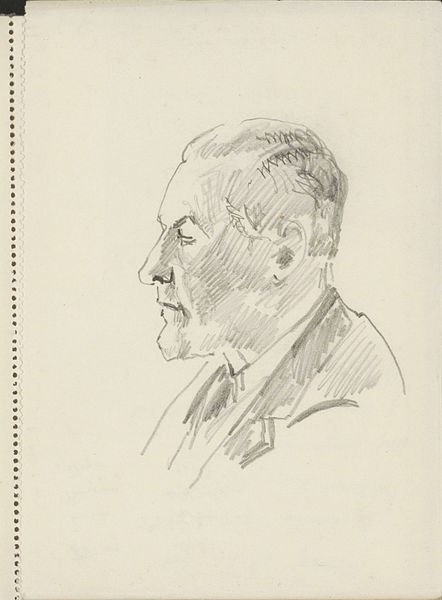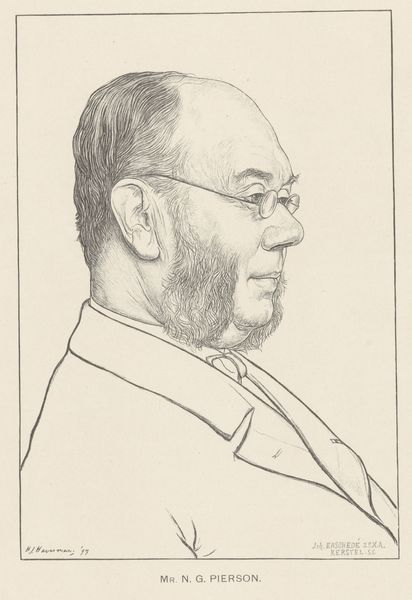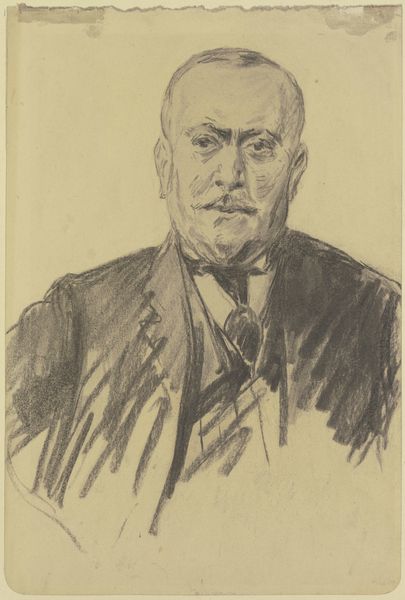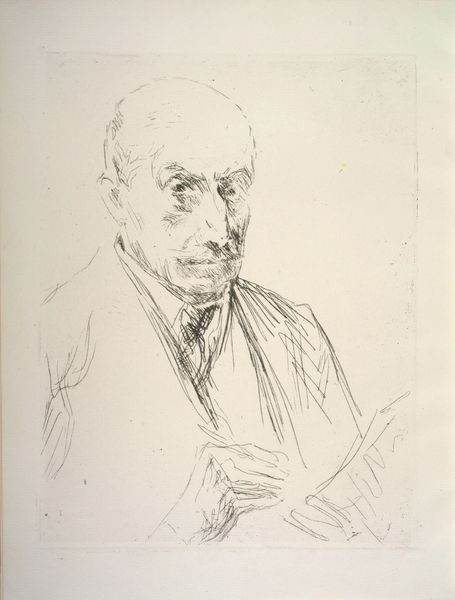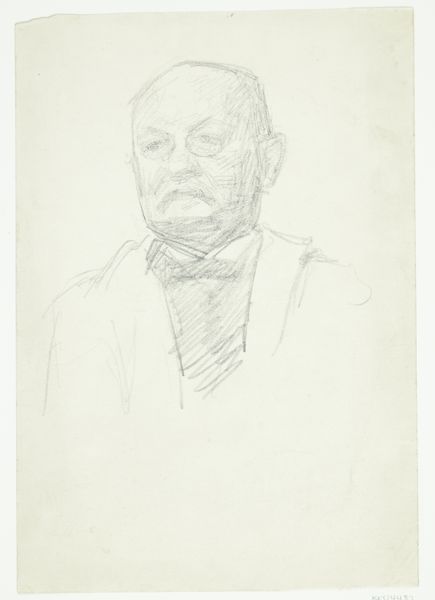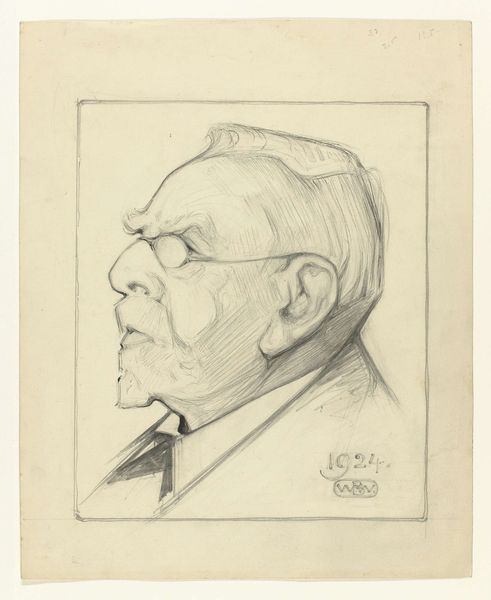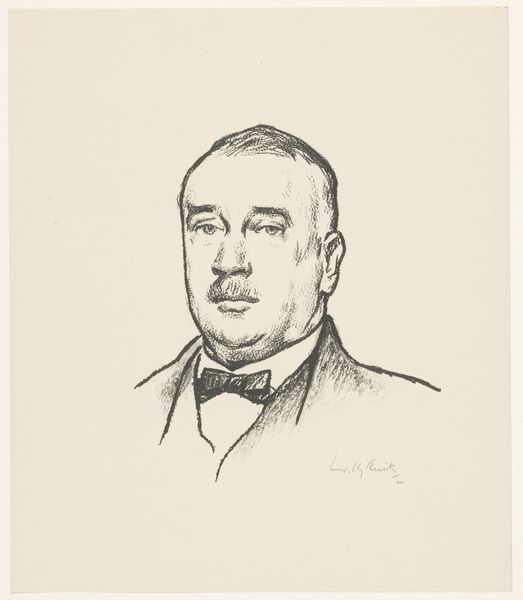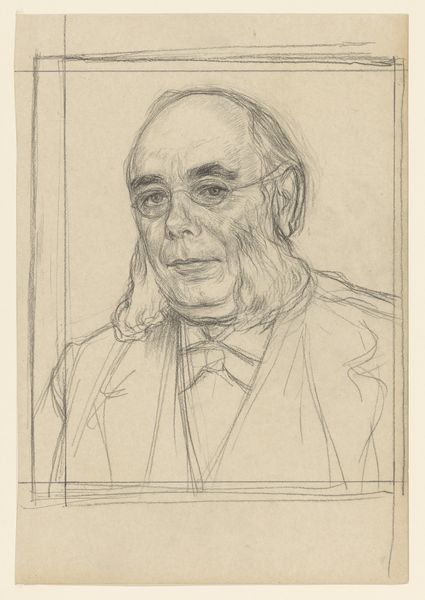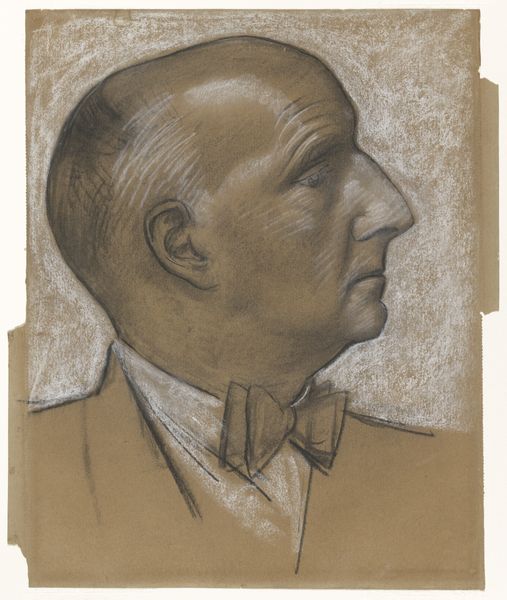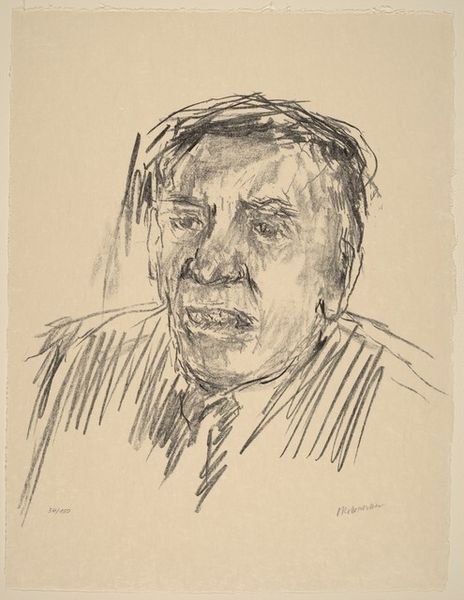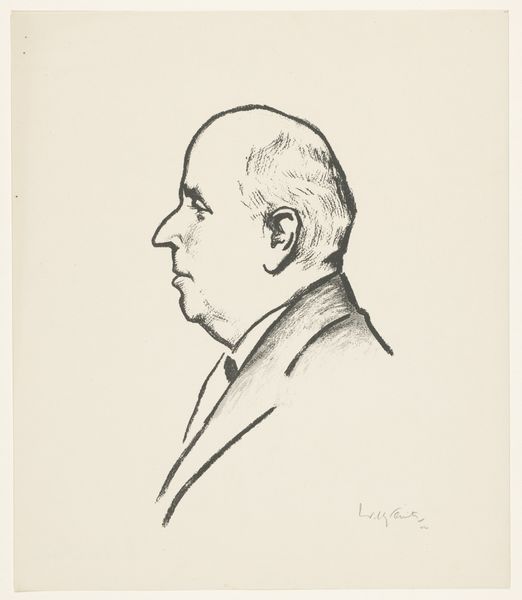
drawing, paper, pencil, graphite
#
portrait
#
pencil drawn
#
drawing
#
pencil sketch
#
paper
#
pencil drawing
#
pencil
#
graphite
#
portrait drawing
#
modernism
#
realism
Copyright: Public Domain
Curator: Looking at this image, the immediacy of the sketch gives it such intimate access to Reifenberg. Editor: Indeed. What we’re seeing here is Arno König’s 1963 portrait of Benno Reifenberg, rendered in pencil on paper, part of the Städel Museum's collection. König captures something quite profound here. It’s more than just an image. Curator: I agree, there's a sense of him pausing, maybe in thought. The very texture and tone feel deliberate. There is the contrast between the precise facial rendering and then looser sketching elsewhere. But it also calls up many traditional themes of the "man of letters". You see this pose often: head shot, suit and tie, and writing. The subject is at his leisure writing his novel. I think it connects to a broader representation of men in modern German society at the time. Editor: The way König captures light on Reifenberg’s face, there’s a hint of melancholy. But the strong lines of the jaw also project the determination needed to persevere through challenging political times. We see this man who surely embodies resilience and the persistence of the written word, but at what cost? What about him feels burdened? The gaze drifting towards his right and down evokes that weight. Curator: It feels a bit early in the process. König used sketches to think about Reifenberg's place, what that embodied after the World Wars, within German culture. Editor: Exactly. I think the composition leads our eye from Reifenberg's face, down to his hand gripping a pen as if it's the last tie to a stable world. Even now it symbolizes stability amidst cultural and political uncertainty. It transcends the identity of Benno Reifenberg himself. The pen and paper are emblems of power, resilience and a connection to a deeper narrative of cultural continuity. Curator: And that narrative is always in conversation with a man who wrote in the post-war, so we see how art grapples with identity, tradition, and place. Editor: It invites us to contemplate the legacy of figures like Reifenberg – those who shape culture through the power of the written word. Curator: And question what they write.
Comments
No comments
Be the first to comment and join the conversation on the ultimate creative platform.


